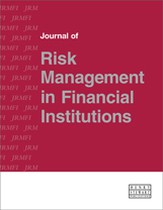Quantification of central counterparty risk
Abstract
A clearing member of a central counterparty (CCP) is exposed to losses on their guarantee fund and initial margin contributions. Such losses can be incurred whenever the CCP has insufficient funds to unwind the portfolio of a defaulting clearing member. This does not necessarily require the default of the CCP itself. In this paper the aim is to quantify the risk a financial institution has when facing a CCP. It is shown that a clearing member's CCP risk is given by a sum of exposures to each of the other clearing members. This arises because of the implicit default insurance that each member has provided in the form of mutualised, loss sharing collateral. The exposures are calculated by explicitly modelling the capital structure of a CCP as well as the loss distributions of the individual member portfolios. An important consideration in designing the model is the limited transparency with respect to the portfolio composition and collateral levels of individual clearing members. To overcome this the fact is leveraged that, for a typical CCP, margin levels are risk based. In particular, the portfolio loss tail as a Pareto distribution is parameterised and this is calibrated to the CCP defined probability of losses exceeding the posted initial margin levels. A key aspect of the model is that wrong-way risk is explicitly taken into account, ie the fact that member defaults are more likely to occur in stressed market conditions, as well as potential contagion between a member's default and the losses on his portfolio.
The full article is available to subscribers to the journal.
Citation
Arnsdorf, Matthias (2012, June 1). Quantification of central counterparty risk. In the Journal of Risk Management in Financial Institutions, Volume 5, Issue 3. https://doi.org/10.69554/BUWE2936.Publications LLP
